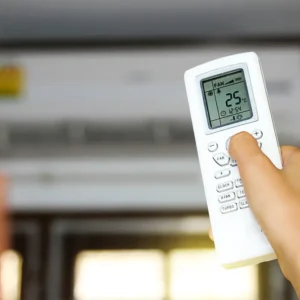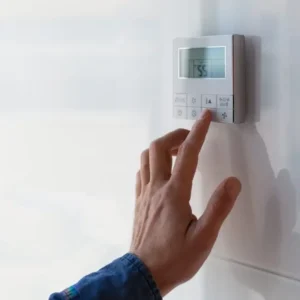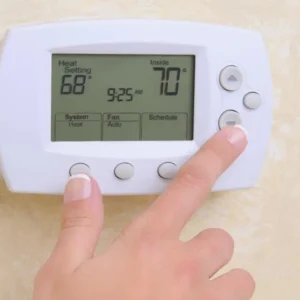If you are wondering “What are the best apps I can use to save my money?” – then you’re in the right place. Whether you’re based in the USA or the UK, this practical guide gives you 11 of the top-apps to help with saving money, and how to make the most of them. I will also share how these tools tie into ways to save money on groceries without coupons — a topic anyone serious about savings should care about.
Why use an app to save money?
Let’s be real: we all know we should save more. But pathing the way from I should → I do is harder than it sounds. Apps can help by automating, tracking, nudging you, and giving you insights into your spending – so the burden of constant manual decisions is lighter. For US and UK readers, the apps below work (or have versions) in your markets and are built with local banking norms in mind.
11 Best Apps I Can Use to Save My Money
Here are my recommended apps, with features, suitability (US / UK), and practical tips.
-
Chime (USA)
-
Why it’s good: In the US market, Chime is widely regarded as one of the best automatic-savings apps. It has features like “round-up” on purchases (i.e., when you spend $4.60, it rounds to $5 and moves $0.40 into savings).
-
How to use it: Link your Chime spending account, enable the “Save When You Get Paid” or “Round-Up” features. Over time, the little bits add up.
-
Grocery savings link: Use the round-up method on grocery purchases. Then you’ll slowly build a “grocery savings pot” without having to grab a coupon each time.
-
-
Qapital (USA)
-
Why it’s good: Qapital uses “rules” you set—e.g., “Every time I buy coffee, save $2” or “If I step 10,000 steps today, save $5”. It’s gamified but realistic.
-
How to use it: Define a goal like “Grocery Buffer” and set a rule: “When I buy groceries, round up and save the change”.
-
Grocery savings link: For example, you buy £/US$40 worth of groceries; automatic round-up means you also save $0.60 today toward next week’s buffer.
-
-
Acorns (USA)
-
Why it’s good: Micro-investing and automatic savings via rounding up every purchase. Good for those who also think long-term.
-
How to use it: Link your card, enable “Round-Ups”, then every grocery transaction helps you accumulate spare change invested or saved.
-
Grocery savings link: The main aim here might be longer-term, but in the short term it forces you to treat groceries as an opportunity to save rather than just spend.
-
-
Goodbudget (USA & some markets)
-
Why it’s good: Based on the envelope budgeting method – you allocate portions of your income into “envelopes” (e.g., groceries, bills, savings).
-
How to use it: Make an envelope for groceries + one for savings. When you buy groceries, manually deduct from the envelope; leftover becomes savings.
-
Grocery savings link: Without needing coupons, you set your grocery budget consciously; if you underspend, move the difference into your savings envelope.
-
-
Rocket Money (USA)
-
Why it’s good: It links to your bank accounts, spots recurring subscriptions you may have forgotten, hints at overspending, helps you cancel unnecessary ones.
-
How to use it: Connect your accounts; use the alerts feature to show you “you spent more on eating out than usual”. Then redirect that extra into savings.
-
Grocery savings link: If you notice you’re eating out more than buying groceries, you can use Rocket Money’s data to shift back into shopping smarter (groceries) and saving the difference.
-
-
You Need a Budget (YNAB) (USA, globally)
-
Why it’s good: Very hands-on budgeting app. Its core philosophy: give every dollar a job (zero-based budgeting).
-
How to use it: At the start of the month, allocate money to ‘groceries’, ‘savings’, etc. If you underspend on groceries, transfer excess to savings.
-
Grocery savings link: Without coupons, you’re still optimizing grocery spending because you’re consciously budgeting for it—and any leftover is automatically savings.
-
-
Emma (UK)
-
Why it’s good: UK-friendly budgeting app, connects to many banks, shows expenditure patterns, alerts when you’re spending more than usual.
-
How to use it: Link your UK bank account(s), set a goal like “Save £50/month”, and monitor grocery spend as one category.
-
Grocery savings link: Use the insight Emma gives you to identify where you’re overspending on groceries (even without coupons) and redirect the savings into your goal.
-
-
Chip (UK)
-
Why it’s good: Automatic savings planner – based on your spending habits, Chip will move money (small amounts) into your savings without you thinking about it.
-
How to use it: Install, connect account, choose your savings goal (holiday, emergency fund, groceries buffer). Let it quietly transfer.
-
Grocery savings link: Set up a “groceries buffer” goal—every time Chip moves money for you, it builds a cushion. Then you’ll feel less need to rely on coupons because you already have savings.
-
-
Revolut (UK & multi-currency)
-
Why it’s good: Even though more commonly thought of for currency/exchange, Revolut has built-in savings vaults and automatic round-ups.
-
How to use it: Use your Revolut card for everyday spending (including groceries). Enable “Vaults” + “Round-Up” so that extra pennies go into savings automatically.
-
Grocery savings link: You pay £42 on groceries; app rounds up to £43 and transfers £1 into your vault. Over weeks/months that adds up.
-
-
Snoop (UK)
-
Why it’s good: Budgeting assistants powered by open banking; Snoop will send you customised hints like “You could save by switching your energy provider” etc.
-
How to use it: Link your account(s), let the insights roll in, act on them.
-
Grocery savings link: If Snoop spots patterns like “You spend £60/week on groceries vs. friends £45”, it helps you reset and then you move the £15/week difference into savings.
-
-
TopCashback (UK)
-
Why it’s good: More “savings via rewards” than pure budgeting – you shop via the app (online/in-store) and get cashback which you can deposit into savings.
-
How to use it: Sign up, link your card (if needed), use cashback offers when shopping (including groceries or store items), then withdraw the cashback into your savings account.
-
Grocery savings link: Even without a traditional coupon, cashback acts like a discount; the money you get back can feed your savings.
-
How to pick the right app for you
With 11 options above, how do you pick? Here are some practical criteria:
-
Region-specific compatibility: If in US, pick US-friendly apps (Chime, Acorns, etc). If in UK, pick UK-centric apps (Emma, Chip, Snoop, Revolut).
-
Your savings style:
-
Want hands-off? → Go for automatic (Chime, Chip, Qapital).
-
Want insight + tracking? → Go for budgeting apps (YNAB, Emma).
-
Want deal-driven? → Use cashback apps (TopCashback).
-
-
Fees & minimums: Some apps have free versions, some make a tiny monthly fee. Be aware. For example, Goodbudget may have premium tiers.
-
Security / Regulation: Make sure the app is regulated/insured appropriately (especially for bank-linked features).
-
Grocery-focused saving potential: Because you’re also interested in “ways to save money on groceries without coupons”, pick an app that helps you monitor grocery spend or redirect savings from groceries to other goals.
Read Also: Best AC Temperature for Energy Saving
How these apps help with Ways to Save Money on Groceries Without Coupons
Let’s make the link concrete. Even if you’re not clipping coupons or using promo codes, here’s how to use apps to save on groceries:
-
Track spending patterns: Many of these apps show how much you’re spending on groceries each week/month. Suppose last month you spent £220, this month £190—redirect the £30 difference into savings.
-
Set budget targets: Apps like YNAB or Goodbudget let you allocate “Groceries” category. If you budget £200 and spend £180, that £20 goes to your savings pot.
-
Use round-ups on grocery purchases: Apps like Chime, Qapital, Revolut let you round up grocery purchases and pay yourself the difference.
-
Cashback from grocery-related spend: Some cashback apps may give you deals for grocery stores or supermarkets – not exactly coupons, but similar in effect (you earn money back).
-
Redirect overspending on eating out back to groceries: If you find you’re eating out because you ran out of grocery budget, the insights from budgeting apps can help you catch that and switch back.
-
Automate a “groceries buffer” savings goal: Using a savings pot labelled “Next month groceries” means you’re psychologically delivering yourself a bonus — even if you don’t use coupons.
-
Make the intangible savings visible: The biggest hurdle to grocery savings is invisibility. If you see the app show that you underspent by £25 this week and that’s automatically saving, you’re motivated.
In short: these apps do more than just “coupon substitutes”; they shift your mindset and structure around groceries and savings.
Practical Tips to Get the Most Out of These Apps
-
Link all relevant accounts: The more transactions visible, the better the insights and automation.
-
Set realistic goals: Don’t aim to save £500/month in your first month if you haven’t budgeted that. Start with £20–£50 and build.
-
Check for hidden fees: Some “free” apps have premium tiers or fees for certain features.
-
Use grocery spend review sessions: Once a week or month, open the app, check how much you spent on groceries, ask “Could I have spent less?” Then move leftover to savings.
-
Automate transfers: One of the most effective things: set it, forget it. Let the app do the work.
-
Keep it simple: Your goal is consistent savings, not perfect tracking every penny.
-
Review and adjust: As months go by, revisit your grocery budget and savings goals. If grocery prices rise (hello inflation), adjust.
-
Don’t rely solely on coupons: Since the theme is “without coupons”, meaning we’re not depending on hunting every deal—but using smarter spending + automation.
-
Stay alert on security: Especially with apps connecting bank accounts. Use strong passwords, enable two-factor authentication.
-
Celebrate wins: Saved extra cash this month? Recognise it (not by spending it). It helps reinforce the habit.
What to watch out for (and avoid)
-
Over-automation risk: If you automate too aggressively, you might end up short for monthly expenses. Ensure you have buffer.
-
Hidden costs: Premium tiers, subscription fees.
-
Poor linking/security issues: Make sure the app uses encryption and is regulated.
-
Focusing only on the app, not the behaviour: The app is a tool—not a magic bullet. You still need to practice smart spending (especially on groceries).
-
Thinking coupons are the only way: This guide emphasises without coupons—but many folks fall into the trap of waiting for “perfect deal”. The smart habit is regular savings + thoughtful grocery spend.
Read Also: The Best Temperature for Heater in Winter to Save Money
Conclusion: Time to Take Action
Let’s wrap this up. You now know the best apps I can use to save my money (11 strong picks), and how they help especially when you’re looking for ways to save money on groceries without coupons. Here’s your action plan:
-
Choose one or two of the apps above that align with your region (US or UK), your style (automated vs hands-on), and your goal (general savings vs groceries buffer).
-
Install the app, link your account(s), and set a specific goal like: “Save £100 by end of quarter” or “Build next month’s grocery buffer”.
-
For the next grocery run, consciously note your spend. Let the app either round-up or track it. At the end of the month, redirect leftover grocery budget into savings.
-
Review monthly: How much did you save? How much did you spend on groceries compared to previous months? Adjust your budget/goal as needed.
-
Keep the momentum: Over time, even small savings add up significantly.
By doing this, you’re doing more than just installing an app—you’re building a sustainable savings habit. You’re also making your grocery spending smarter, less reliant on coupons, and more aligned with your long-term financial goals.
Go ahead: pick your app, link it, set your goal—and let the savings begin.





